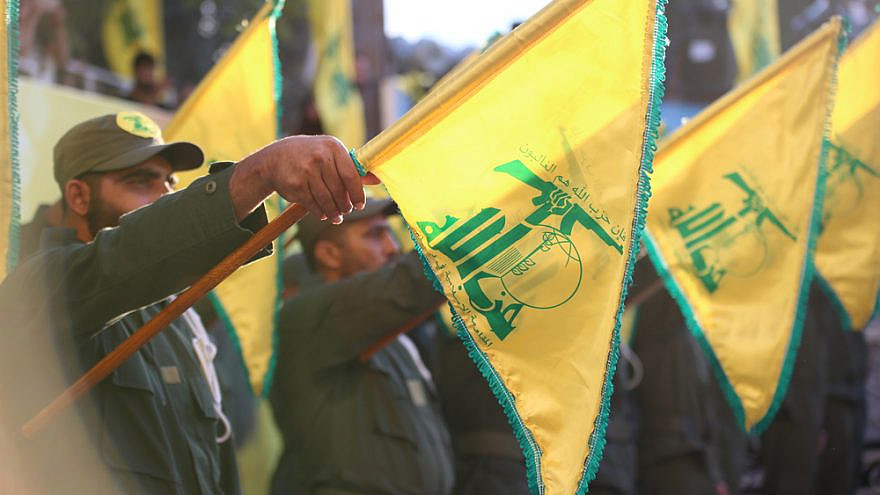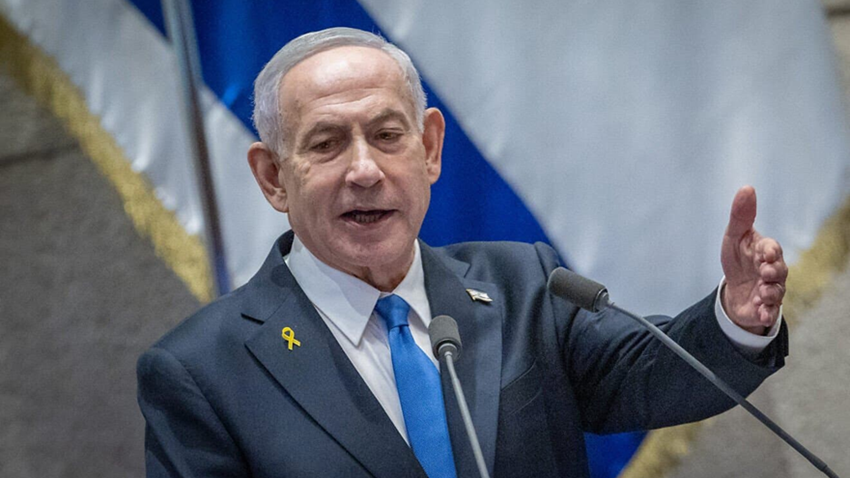Flags of Hezbollah fly during a funeral salute. Credit: Crop Media/Shutterstock.
By Israel Kasnett
Israel’s war against Hamas after the terrorist group brutally massacred 1,400 civilians and soldiers and kidnapped 228 is only beginning, according to Israeli Prime Minister Benjamin Netanyahu and Defense Minister Yoav Gallant. While Israel’s focus is on Gaza, Iran is threatening to attack Israel from other arenas as well, through its terror proxies in Lebanon, Syria and Yemen.
Last week, the Houthi army in Yemen fired rockets toward Israel, but they were intercepted by Saudi and U.S. forces. The USS Carney, a navy destroyer in the northern Red Sea, intercepted three cruise missiles and several drones, according to an Associated Press report.
While Israel is currently seeing relatively small attacks on all three of these fronts, the question going forward is whether Hezbollah in Lebanon, Iranian militias in Syria and the Houthis in Yemen will attack Israel in full force at Iran’s behest.
Behnam Ben Taleblu, a senior fellow at the Washington-based Foundation for Defense of Democracies, specializes in Iran’s regional proxy groups and their military capabilities. He told JNS that “despite earlier indirect fire attacks from Syria, the most important proxy to keep your eyes on now is Hezbollah in Lebanon.”
“There, Tehran faces a catch-22 about using its most successful proxy to bail out another, as that could trigger a third Lebanon war, which, however costly, would defang or weaken Hezbollah, which is a force Tehran is relying on to prevent direct action against its nuclear program,” he said.
Ben Taleblu also noted that “as more members of Iran’s ‘Axis of Resistance’ enter the fray, the unique capabilities of each proxy are what Tehran is counting on to save Hamas, deter Washington, and overwhelm Jerusalem.”
He said people should “shudder” at the fact that the Houthis are in possession of land-attack cruise missiles that can travel up to 2,000 kilometers.
“No other proxy of Tehran has these capabilities,” he said.
“That the Houthis would use their long-range strike platforms, courtesy of Tehran, against Israel should be no surprise,” he said. “The rebel groups have expressed a desire to enter a conflict for at least half a decade, if not longer.”
According to Ben Taleblu, Tehran’s larger strategy “is to threaten a wider multi-front war that draws or distracts Israel away from destroying Hamas, splits military power and political attention, as well as deters greater U.S. involvement by threatening horizontal and vertical escalation.”
“The ability of Tehran to do this successfully remains to be seen,” Ben Taleblu said, “but that is why it is imperative for it to fail as a strategy to never be used or wielded again.”
Jonathan Spyer, an expert on Syria, Iraq and radical Islamic groups, and a senior researcher at the Philadelphia-based Middle East Forum, highlighted two important aspects with regard to Syria.
He told JNS there is a “significant” Iran-led framework on the ground in Syria. With this in mind, if a war begins on Israel’s northern border, “Syria will be one of the fronts.”
Until now, Israel has been fighting what is referred to as the “war between wars.”
For several years, Israel has been carrying out attacks in Syria to try and degrade Iran’s attempt to create an infrastructure there and, we are told, to try and stop precision-guided munitions (PGM) from getting through to Hezbollah in Lebanon.
These efforts are still continuing, with Israel bombing the airports in Aleppo and Damascus this week to prevent Iranian weapons shipment deliveries.
Spyer noted that while Israel’s security establishment congratulates itself on its own success in that area, “it is very difficult to measure how successful it really was.”
“Hezbollah clearly has PGM’s,” Spyer noted. “Maybe they would have had more if we hadn’t been bombing them but we haven’t managed to stop them from getting through.”
Spyer also pointed to Iran’s “expansive” militia framework inside Syria, which represents a formidable threat to Israel.
“There are armed groups on the ground who work for Iran who do not take their orders from Syrian President Basher al-Assad’s regime,” he said. “They take their orders from the IRGC [Islamic Revolutionary Guard Corps] and Tehran.”
Spyer warned there is information on the ground that there are elements of these organizations, Iraqi and Lebanese fighters, “who have been moving westward from southeastern Syria to southwestern Syria close to the border with Israel” since the beginning of the war on Oct. 7.
“There are a lot of militias and a lot of people,” he said. “Some of them work directly with the Syrian regime, which is very disparate now.”
He explained that the Assad regime is not in complete control of Syria and there is “no single pyramid” of government or command, but rather “all kinds of little pyramids. … The regime doesn’t actually control what goes on the ground. … Iranians don’t take orders from the regime.”
According to Spyer, there is an expansive militia framework with military capacities on Syrian soil. “It is likely that if the war in the north starts, the Syrian front will become part of it,” he warned. “It won’t just be from Lebanon; it will be coming from Syria too.”
“It’s a real threat,” he said.
Source: JNS


































